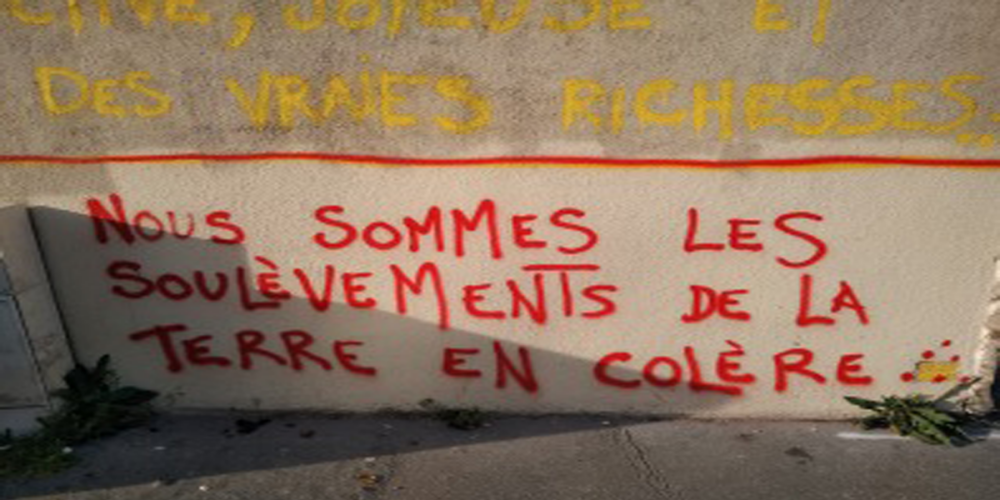On 21 June the French government dissolved the environmental group Les Soulèvements de la Terre. The immediate cause cited in the decision was a clash of the activists with the police while resisting the construction of a reservoir in the west of the country.
The group was dissolved as a collective with “violent methods of operation.” The decision also cites Andreas Malm’s bestseller How to Blow Up a Pipeline as a source of inspiration for the collective’s direct action and “material destruction.”
If the tactics of Les Soulèvements de la Terre and similar organisations are the opening, what is the endgame—or, more importantly, what is the middle game?
The endgame is, in broad and blunt strokes, a post-capitalist society that survives the climate emergency. Mileage may vary in terms of this society’s hypothetical organisation, but that is a topic for another article. This one is about the middle game: how do we get to a system capable of survival?
As rational, literate people we first recognise that the climate crisis exists, coupled with centuries of ever-advancing capitalist networks of exploitation. As people who read the news and live through unprecedented climate change, we recognise that the climate emergency is a class issue. The capitalists will not concede anything in the climate crisis if not forced to do so; the receding horizon of the ecosystem’s breakdown is not the horizon of their profits.
There is a political, activist and entrepreneurial movement that expects change to come through the ballot box, legislation, and grand strategies, both in timescale and area or population, encompassed as in the example of the Green Deals. On the other hand there is the approach of local solutions, communal practices and community organising on principles of ecology and visions of transition into post-capitalist societies.
These might be motivated by raising consciousness, or showcasing sustainable small-scale visions. Many engage in these activities to see the results of their activities and to put their time and skill towards a different future from that to which the community at large is going, pushed and pulled by the contradictory sociopolitical forces.
Different in tactics but similar in expectations might be the collectives that take direct action against new nature-destroying developments, or that raise awareness of the climate emergency, targeting public events. There is something in the idea of gaining visibility, and expecting more people to join in with similar or complementary activities—but it belongs to the opening rather than the middle game.
The lack of the mechanism needed to transform this process into a post-capitalist society and do away with the capitalist state is the major line in the eco-pessimist circles. The tactics ring hollow in their interpretation, and leave the dominant market forces in place while the clock is ticking.
Jodi Dean and Kai Heron dubbed their vision of the middle game “climate Leninism.” The revolution is the middle game; the party is the agent; the working class is the revolutionary subject. It integrates the tactics of different groups we wrote about earlier but with a vision that builds a bridge towards the endgame futures so many theorists are happy to imagine beyond the climate emergency horizon. It is also a bridge we know it is possible to build.
The organising of the revolutionary party is undoubtedly hard; the dialectics of climate change, however, provide windows of opportunity. The crisis is accelerating fast, with sharp blows one after the other hitting the working class, and riding along other companion crises. The public health crisis, the food crisis, and wars—all of them are climate issues, and all of them are a source of spiralling profits for the capitalists and spiralling social murder for the rest.
The party in such a setting organises in and through communities. The post-revolutionary state will be the one in which the proletariat can bring the real “green deal” and intervene in the galloping pollution, exploitation and destruction cycles.






